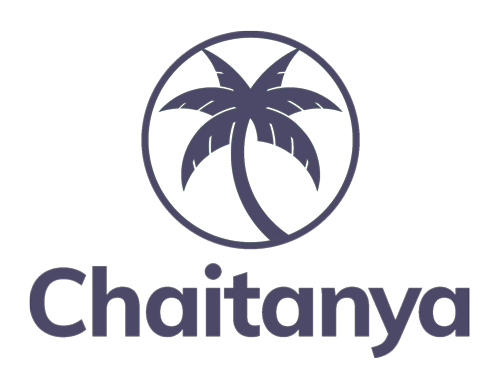January 10, 2023
Introduction
Financial inclusion is a must to ensure access to the complete range of financial services like deposits, lending, payments, insurance, etc. to historically marginalized groups at a reasonable price. Small enterprises, women, and other low-income groups can be considered examples of these groups. To give strength to these sections of society, Microfinance Companies in India play a very crucial role. In this article, we’ll discuss the role of the microfinance industry in financial inclusion.
Miro-finance is a boon for underprivileged
Due to a variety of factors, this underserved population only has a limited amount of access to standard banking channels. The primary causes include a lack of collateral or credit history, inconsistent income patterns, remote locations, and a lack of financial awareness.
Financial inclusion refers to the availability to both individuals and businesses of useful and cost-effective financial goods and services, including payments, transactions, savings, credit, and insurance, that are provided in a sustainable and ethical manner.
Thanks to the concept of Microfinance. It is a type of financial service that offers little-to-no-interest loans and other financial products to low-income and underprivileged households. Savings accounts, checking accounts, financial transfers, micro-insurance, and microcredit are just a few of the services offered by micro-finance.
Why is it required?
The microfinance industry protects those who are not able to get lending benefits from the established financial system. The rural poor have no choice but to borrow money from local moneylenders at high-interest rates because conventional banking institutions refuse to lend. It happens due to the lack of collateral or proof of recognized employment which is needed at the time they seek loans. MFIs help give these people access to financial facilities.
Inclusive Growth of weaker sections
By making credit accessible to those in the last mile, micro-finance is essential in fostering inclusive growth and serves as a safety net for those at the base of the economic pyramid. The poorest people are given access to money through microfinance loans, which enables many of them to launch new enterprises, expand current ones, insure against shocks from illness and inclement weather, and manage their consumption.
Expanding the impact of Micro-finance
28 states and 9 union territories are included in the reach of microfinance programs. Eastern and northeastern parts of the nation account for 37% of the regional distribution, followed by the south (27%), and the west (15%). Micro-finance thus plays a continuing role in influencing people’s lives and means of subsistence. Even though there are micro-finance institutions practically everywhere in the nation, 82% of the loan portfolio is concentrated in just ten states.
Effective Customer Protection
The RBI microfinance laws offer a strong framework for customer safety. The RBI-recognised self-regulatory body supports this structure (SRO). The SRO aids MFIs in carrying out the rules, makes efforts to build capacity, enhances governance through routine oversight and assistance, and offers a forum for dealing with issues on a sectoral level.
Programmes for digitalisation
Initiatives for digitalization have been coordinated with the quick uptake of smartphones and the growing comfort of borrowers with online payment methods. Today, almost all loans are funded online and sent straight to the borrower’s bank account; also, more and more repayments are being made digitally. In March 2022, the Reserve Bank published a thorough and updated regulatory framework for micro-loans:
Core Principles
The principle of client protection was a major consideration when these rules were drafted. The framework has five key ideas built into it to help with this. To ensure that all regulated organizations involved in microfinance follow the goal of client protection within a well-calibrated and harmonized setup, regulatory arbitrage has been addressed by the establishment of a lender-agnostic and activity-based regulation.
Protection prevents micro-loan borrowers from becoming over-indebted as a result of loans being granted that are larger than their ability to repay, which could subsequently result in forceful collection tactics. Enhancing transparency measures to allow the competitive forces to lower interest rates.
Steps to Take
The “stated purpose of the loan,” which is frequently requested from borrowers throughout the loan application process, should be confirmed after the loan’s term by MFIs. Concerns should centre on how easy it is for people to acquire micro-loans in both urban and rural areas, the associated rules, and the availability of basic training for the underprivileged in both places.
Role of Chaitanya India in financial inclusion
In the past few years, Chaitanya India with its ethical deeds has emerged as one of the best microfinance companies in India. Through financial inclusion, the company offers the availability of useful and cost-effective financial goods and services to low and middle-income businesses and individuals. The goal of the company is to simplify the process of lending including payments, transactions, savings, credit, and insurance.
The company’s mission is to help entrepreneurs in underdeveloped areas of the countries pursue their ideas by offering financing services. All loans in India that are under Rs. 1 lakh are classified as micro-loans. All services are provided in a sustainable and ethical manner.
Making financial inclusion services easy to use, accessible, and affordable is the goal of Chaitanya India Fin Credit, an NBFC-MFI division of Navi Micro-finance Group. Bengaluru serves as the company’s corporate headquarters. One of Bangalore’s microfinance organizations with the quickest growth is Chaitanya India.
Conclusion:
During the past ten years, the microfinance industry has experienced a tremendous expansion in India. While paying little regard to the breadth, excellence, and viability of financial services, most microfinance service providers have continued to concentrate on growing the reach of their programs.


